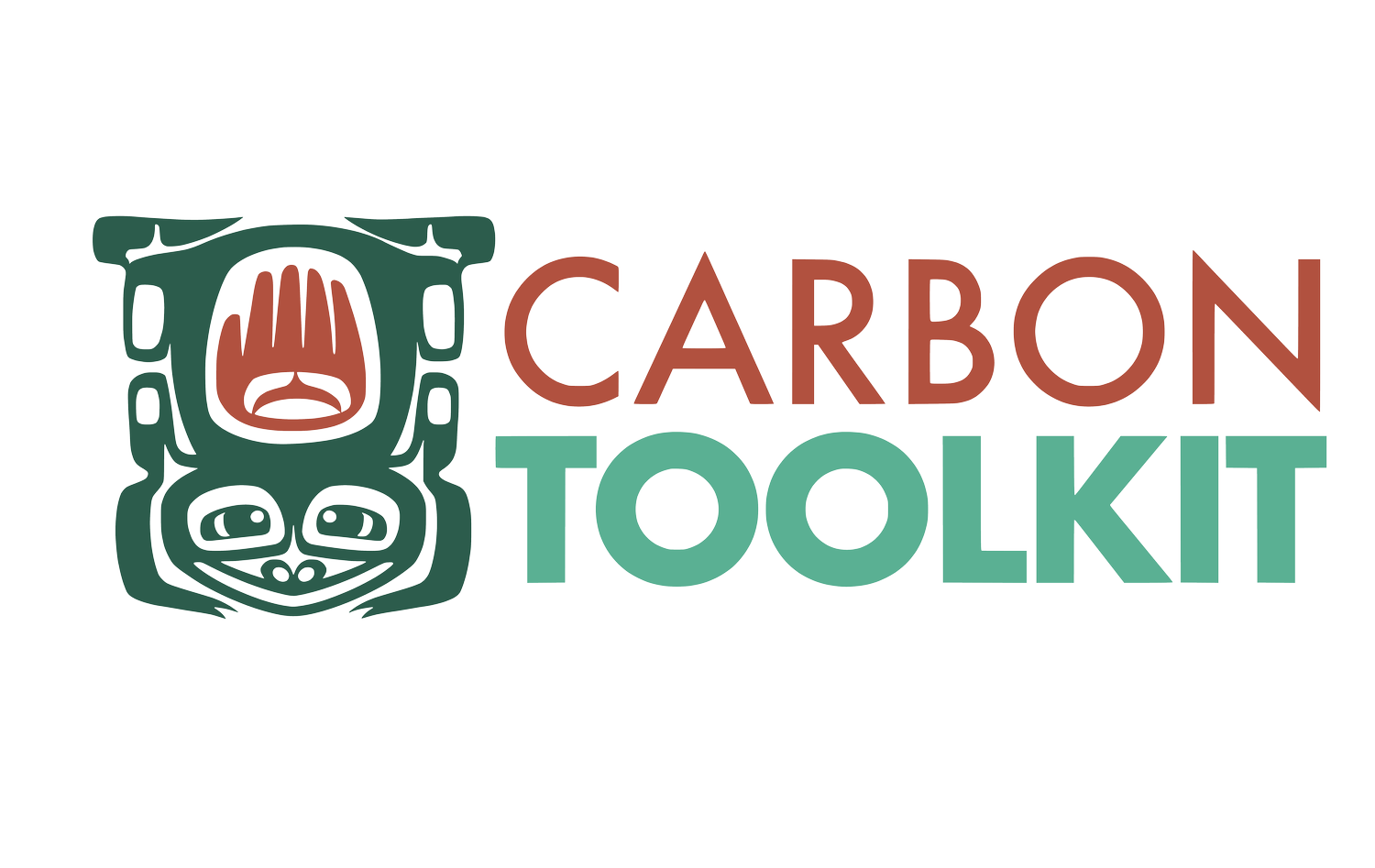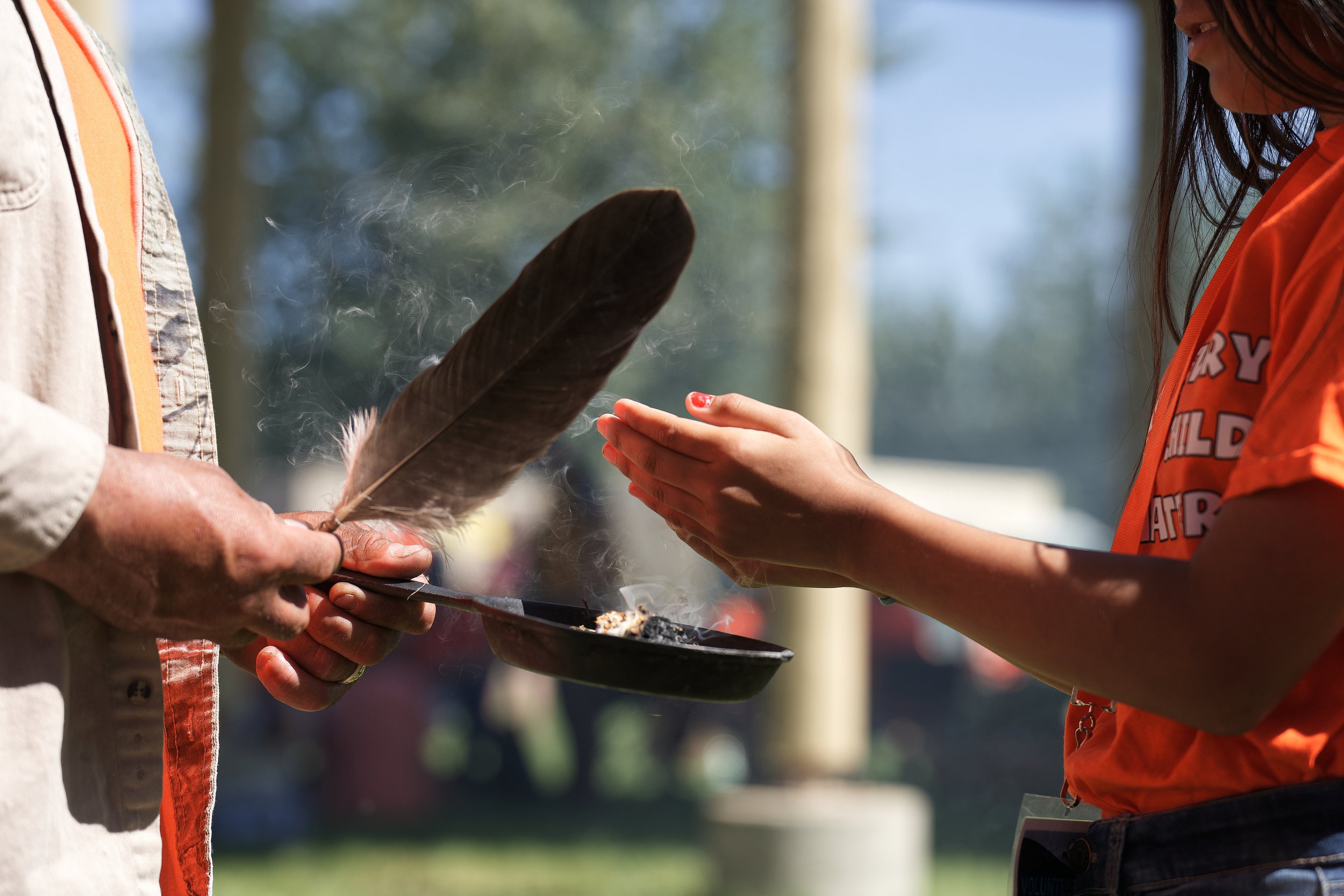
Module 3: Implementing and Upholding First Nations Carbon Rights, Ownership & Entitlement
Introduction
First Nations seeking to protect and restore their lands currently face a complex legal pathway. Forest carbon projects on First Nations’ land should be designed to manifest community values and priorities, and should create tangible ecological, economic, and socio-cultural outcomes [1].
The current system of carbon offsets is rooted in a western worldview, and the rights to develop projects flow from the state [2]. The federal and provincial offset protocols and regulations have not been co-developed with First Nations. While Indigenous organizations push to change this system, there is interest from some First Nations to explore carbon offset projects.
Some nations are particularly well-positioned to explore offsets. In 2020, the provincial government identified the rarest old growth at risk of being logged and invited First Nations to approve the deferral of logging in those areas. Carbon projects offer an opportunity for Nations to earn revenue from the sale of offsets generated through the conservation of old growth.
For more information see Indigenous Caucus Statement Nature-based Climate Solutions Summit by Nitah et al 2022, p. 5) and Indigenous Climate Action’s report on Nature-based solutions.
3.1 First Nations Rights
First Nations in B.C. hold inherent and constitutionally-protected Rights and Treaty Rights. In 2019, the provincial government passed the Declaration on the Rights of Indigenous Peoples Act (Declaration Act). In 2021, the federal government passed Bill C-15, An Act Respecting the United Nations Declaration on the Rights of Indigenous Peoples (UN Declaration Act).
Any carbon project developed on First Nations’ territory must fully recognize and uphold First Nations’ inherent rights, as defined in the UN Declaration. Specifically, carbon offset development, beyond its carbon benefit, must respect the right of First Nations:
to self-determination and self-government (Art. 3 and 4);
to make decisions in regard to their own territory (Art. 18);
to maintain and develop their political, economic and social systems or institutions, to be secure in the enjoyment of their own means of subsistence and development, and to engage freely in all their traditional and other economic activities (Art. 20);
to improve their economic and social conditions (Art. 21);
to determine and develop priorities and strategies for exercising their right to development (Art. 23);
to their traditional medicines and to maintain their health practices, including the conservation of their vital medicinal plants, animals and minerals. meaningfully contribute to the protection and restoration of First Nations’ territories (Art. 29);
help maintain and strengthen First Nations’ distinctive spiritual relationship with their land and waters and uphold their responsibilities for generations to come (Art. 25);
to the lands, territories and resources which they have traditionally owned, occupied or otherwise used or acquired (Art 24);
to own, use, develop and control the lands, territories and resources that they possess by reason of traditional ownership or other traditional occupation or use, as well as those which they have otherwise acquired (Art 26);
to determine and develop priorities and strategies for the development or use of their lands or territories and other resources (Art 32);
“Bill C-15 strives to align the UN Declaration with Canadian law. Indigenous Peoples can set their goals and agenda by defining what they mean by “free, prior, informed consent” and other terms within the articles of the UN Declaration. They can engage in practices of internal reconciliation specific to land management. From there they can assert their territorial responsibilities from a position of authority. Two-eyed seeing and ethical space are overarching concepts that can inform other ideas and activities.”
The UN Declaration states that Indigenous people have the right to give or deny their free prior and informed consent (FPIC) for projects that affect them, their land and their natural resources [3]. It is important that nations understand the full suite of benefits and risks of implementing a carbon project on their land. If done right, carbon management can be a launching point toward new pathways for Indigenous communities to develop conservation economies [4].
The lack of available protocols for carbon projects on ‘crown’ land prevents many Indigenous-led carbon projects from being actualized [5].
Federal and Provincial offset protocols, and Canadian common law more broadly, do not recognize ‘crown’ land as Indigenous land, and do not recognize Indigenous Carbon Rights as an Aboriginal Right, meaning a right that is inherent, inalienable and has existed prior to European contact [6].
Policy must better support Indigenous leadership in carbon projects and recognize the right to carbon on Indigenous land as an Aboriginal Right.
3.2 Ownership of Carbon
Canada is a patchwork of lands managed by colonial governments, treaty areas, co-managed lands, title areas, private lands, and contested lands. In BC, most land is considered ‘crown’ land. The provincial government takes the position that in the absence of any agreement or legislation to the contrary, it is the owner of the rights to benefit from carbon projects on ‘crown’ land [7].
Consequently, the rules guiding carbon offset projects on ‘crown’ land are largely shaped by colonial governments and businesses. In most cases, the crown does not recognize First Nations’ ownership of the rights, title, interest in, and benefits associated with, any GHG emissions stored through land management activities on ‘crown’ land.
In order for a carbon project to be implemented, the project proponent must prove they have ownership rights to the carbon stored and sequestered in the project area. If a project falls within what the crown classifies as “private” land, which includes land owned fee simple, reserve land, or land where Aboriginal Title has been proven, a carbon project can proceed without colonial government involvement.
3.3 Pathways to Defining Ownership
Atmospheric Benefits Sharing Agreements (ABSA) in British Columbia
Nations that wish to pursue a carbon project on ‘crown’ land must go through a process of defining entitlement to the carbon stored there. Currently, the only way to prove ownership of carbon on ‘crown’ land is through signing a series of agreements with the provincial government: first, a Reconciliation Agreement, followed by an Atmospheric Benefits Sharing Agreement (ABSA).
An ABSA is a document that clarifies carbon ownership over a given area. Importantly, ABSAs only clarify the ownership and right to sell carbon credits generated in a given area—they do not address the subsurface rights, or any treaty table talks. As of mid-2022, B.C. is the only jurisdiction in Canada where First Nation carbon rights are recognized, and where ABSAs and First Nation-led carbon projects are found.
In this toolkit, we use Atmospheric Benefit Sharing Agreement to mean any of the following: atmospheric benefit agreement, Indigenous atmospheric benefit agreement, atmospheric benefit sharing agreement, or other agreement respecting entitlement to claim Offset Units, carbon credits, emission offsets or other benefits resulting from a project’s reductions in greenhouse gas (GHG) emissions or enhancement of GHG removals.
An ABSA defines how revenue generated through the sale of offsets is distributed between the nation developing the project and the provincial government. Usually, First Nations retain 80-90 percent of revenue earned, while the provincial government might retain 10-20 percent. Retaining a share of the benefits obtained through the sale of carbon credit is often a condition of approval for the provincial government.
ABSA percentages are periodically reviewed. The provincial Minister of Water, Land and Resource Stewardship, the Minister of Indigenous Relations and Reconciliation, and the Office of the Chief Forester currently have the authority to approve ABSAs. Because the power to grant ABSAs lies in the hands of the provincial government, conflicting interests in land management priorities can impact the chance of an ABSA being granted.
To date, 14 First Nations have established ABSAs with B.C. [8] Two of those projects are on ‘crown’ land: the Cheakamus Community Forest project, and the Great Bear Forest Carbon project. Both of these projects are featured as case studies in Module 4 of this toolkit.
Alternative Pathways
Various reports and research have identified key legal arguments/pathways reports could be useful for nations within B.C. who have been denied an ABSA on ‘crown’ land, or for Nations outside of B.C.:
Claiming ownership to carbon as a resource that was never ceded by your nation to the crown, and thus ownership and rights of use are still retained by your First Nation [9].
Asserting territorial jurisdiction over forests and areas that can be managed and conserved in a way that is compatible with recognizing the existence of carbon rights that underlie carbon credits. This could happen in areas controlled by First Nations governance structures under settled land claims agreements, on reserves, and off-reserve through the assertion of Aboriginal title [10].
Arguing that First Nations have Aboriginal and treaty rights to or related to the conservation and environmental management practices that would result in the ability to own and sell carbon credits.
Asserting Aboriginal (Art. 29 of the Declaration Act) and Treaty Rights to or related to the conservation and environmental management practices that would result in the ability to own and sell carbon credits [11].
Obtaining tenure through creation or transfer of a Community Forest Agreement or a First Nations Woodlot License could enable legal rights to a carbon project on that tenure land.
Declaring an Indigenous Protected and Conserved Area (IPCA) may be a potential path for securing carbon rights [12]. We are yet to see how Federal and Provincial governments will recognize self-declared IPCAs.
Continue reading








